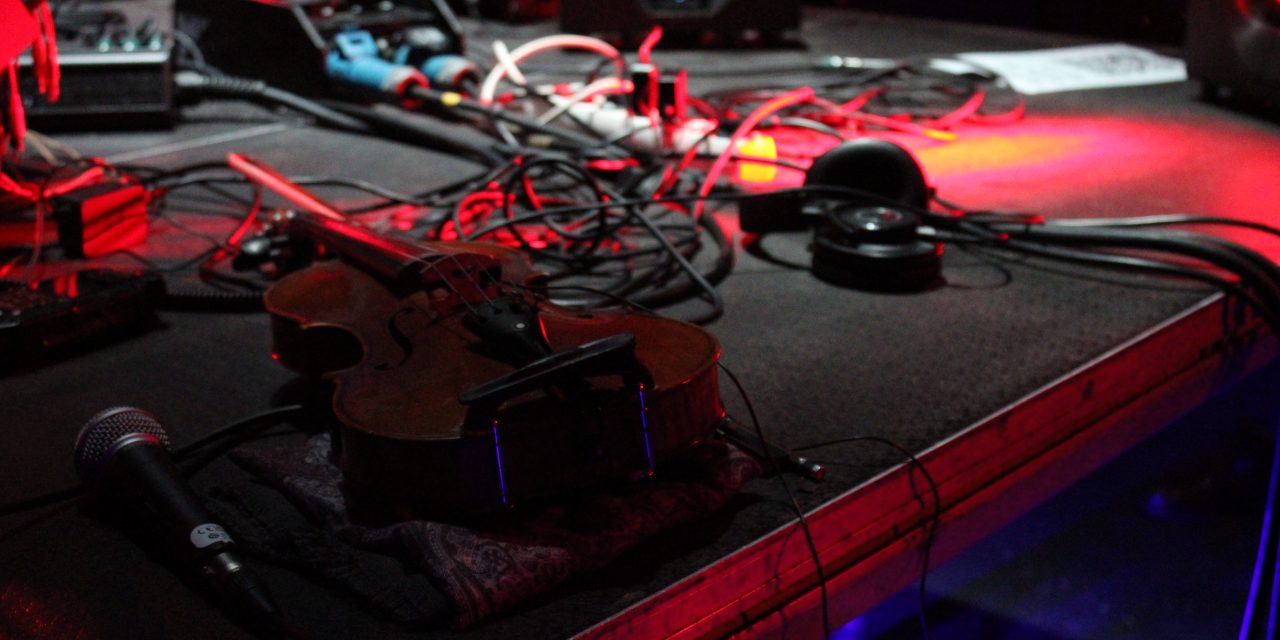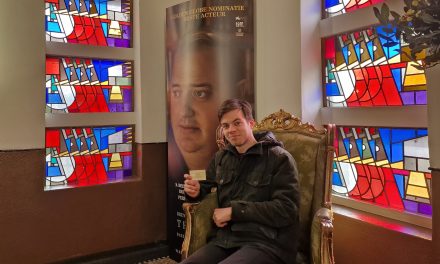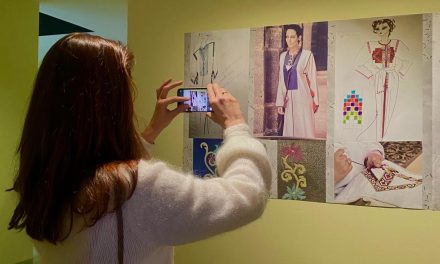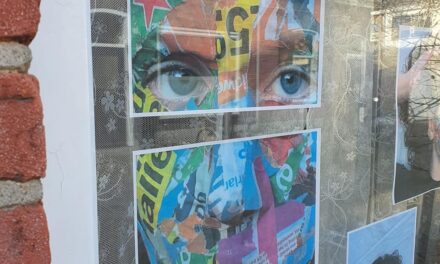Even though the definition of music differs greatly from one culture to another, it is a universal aspect of human history, a phenomenon that every culture partakes in. The beginnings of music are a topic of debate among experts, with theories often linking it to the development of language. Yet, there is no agreement on whether music predates language, emerged after, or developed simultaneously. Many societies have their tales about how music was created, usually linked to their unique philosophical, religious, or mythological views – Charles Darwin proposed that the emergence of music was tied to humans attempting to replicate a birdsong. Regardless of different viewpoints, it’s clear that music serves as a universal language, one that transcends mere words and linguistic boundaries.
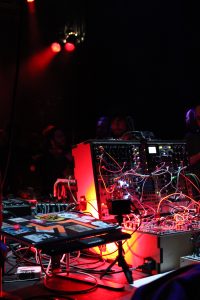 So, how did we get from birdsong to using sound resources picked up by microphones, generating basic acoustical waveforms such as sawtooth waves, square waves, and sine waves, complex computer installations, and microprocessors? The response to this question may be too complex to provide at the moment, but it is evident that our perception of music, along with its definition, is gradually evolving and altering. Despite this, in many ways, we still see the intersections between classical and contemporary music genres. A space that seems to welcome this type of tandem is “Modulation” – the hardware/modular focused electronic music community of Utrecht – a city in The Netherlands that seems to have made its name in the global electronic music scene. On February 11th, Modulation held a live electronica event in an intimate setting hosting Mara, Enrico Becker, and Paul + Paulina. Although all four individuals are masters in their fields, the performance that most notably stood out and succeeded in captivating everyone’s hearts was by Paul and Paulina.
So, how did we get from birdsong to using sound resources picked up by microphones, generating basic acoustical waveforms such as sawtooth waves, square waves, and sine waves, complex computer installations, and microprocessors? The response to this question may be too complex to provide at the moment, but it is evident that our perception of music, along with its definition, is gradually evolving and altering. Despite this, in many ways, we still see the intersections between classical and contemporary music genres. A space that seems to welcome this type of tandem is “Modulation” – the hardware/modular focused electronic music community of Utrecht – a city in The Netherlands that seems to have made its name in the global electronic music scene. On February 11th, Modulation held a live electronica event in an intimate setting hosting Mara, Enrico Becker, and Paul + Paulina. Although all four individuals are masters in their fields, the performance that most notably stood out and succeeded in captivating everyone’s hearts was by Paul and Paulina.
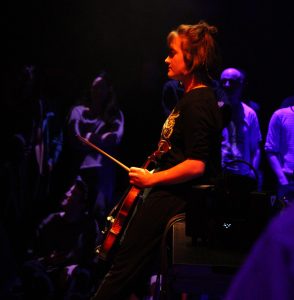 This duo’s, names not only rhyme but, despite coming from diverse backgrounds, harmonize perfectly in sound frequency. Paul is an electronic ambient artist, from The Netherlands who is into unconventional sounds, and Paulina – is a classically trained Ukrainian violinist with an interest in manipulating violin through digital technologies. When asked for their thoughts on the event, Aleksi Nadaraia, a 25-year-old audience member who studies music himself, reminisced. “I liked the performance with the violinist the most. I think human touch is really crucial for the audience to relate, and sometimes it’s hard to show this human aspect when we talk about electronic music performances”. Paul and Paulina, as Paul says met at a music gadget shop and since then embarked on a journey with a mission to meld the worlds of classical and electronic music. The outcome of their collaboration is both unpredictable and surprising. During their performance, you imagine yourself in a personal habitat, where you come face to face with people and machines. “With live electronics it’s different, people played on analogue synths and drum machines. I like watching them tweak all these knobs, or displace the wires on their synth” says Aleksi. Whether you were an avid synth enjoyer or just curious about what that big box with wires does, the event was for everyone. An evening in which electricity worked its way from the table, to the feet of the floor and back felt like a meditation – an experience in which every single person present was united on the same wavelength. What’s most extraordinary is that Paul and Paulina’s performance was mostly improvised – with Paulina occasionally waving her bow in the air like a magic wand and humming in harmony to Paul’s clever looping and delaying. “Pavlina is more than just ‘a human element’ to electronic performance. I really like her stage presence. In the act with Paul, she is more than just a musician added to the set. She brings the act from musical performance to the performance art territory. And it has to do with every move and sound she makes. Not a single move seems unintentional and not a single gaze wasted. She uses all her tools to charm the audience I feel. Which is for sure immersive and hypnotic” – Aleksi states.
This duo’s, names not only rhyme but, despite coming from diverse backgrounds, harmonize perfectly in sound frequency. Paul is an electronic ambient artist, from The Netherlands who is into unconventional sounds, and Paulina – is a classically trained Ukrainian violinist with an interest in manipulating violin through digital technologies. When asked for their thoughts on the event, Aleksi Nadaraia, a 25-year-old audience member who studies music himself, reminisced. “I liked the performance with the violinist the most. I think human touch is really crucial for the audience to relate, and sometimes it’s hard to show this human aspect when we talk about electronic music performances”. Paul and Paulina, as Paul says met at a music gadget shop and since then embarked on a journey with a mission to meld the worlds of classical and electronic music. The outcome of their collaboration is both unpredictable and surprising. During their performance, you imagine yourself in a personal habitat, where you come face to face with people and machines. “With live electronics it’s different, people played on analogue synths and drum machines. I like watching them tweak all these knobs, or displace the wires on their synth” says Aleksi. Whether you were an avid synth enjoyer or just curious about what that big box with wires does, the event was for everyone. An evening in which electricity worked its way from the table, to the feet of the floor and back felt like a meditation – an experience in which every single person present was united on the same wavelength. What’s most extraordinary is that Paul and Paulina’s performance was mostly improvised – with Paulina occasionally waving her bow in the air like a magic wand and humming in harmony to Paul’s clever looping and delaying. “Pavlina is more than just ‘a human element’ to electronic performance. I really like her stage presence. In the act with Paul, she is more than just a musician added to the set. She brings the act from musical performance to the performance art territory. And it has to do with every move and sound she makes. Not a single move seems unintentional and not a single gaze wasted. She uses all her tools to charm the audience I feel. Which is for sure immersive and hypnotic” – Aleksi states.
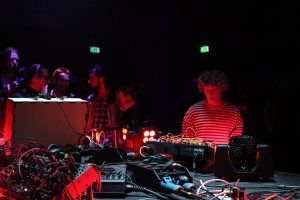
In a world where music’s definition and perception continuously changes, the event hosted by Modulation serves as a vivid example of the expansion, where the boundaries between classical and electronic genres are not just blurred but beautifully intertwined. It’s a reminder that, despite the ever-changing nature of music, its core remains the same – a deeply human, unifying force that transcends time, culture, and technological advancements.
